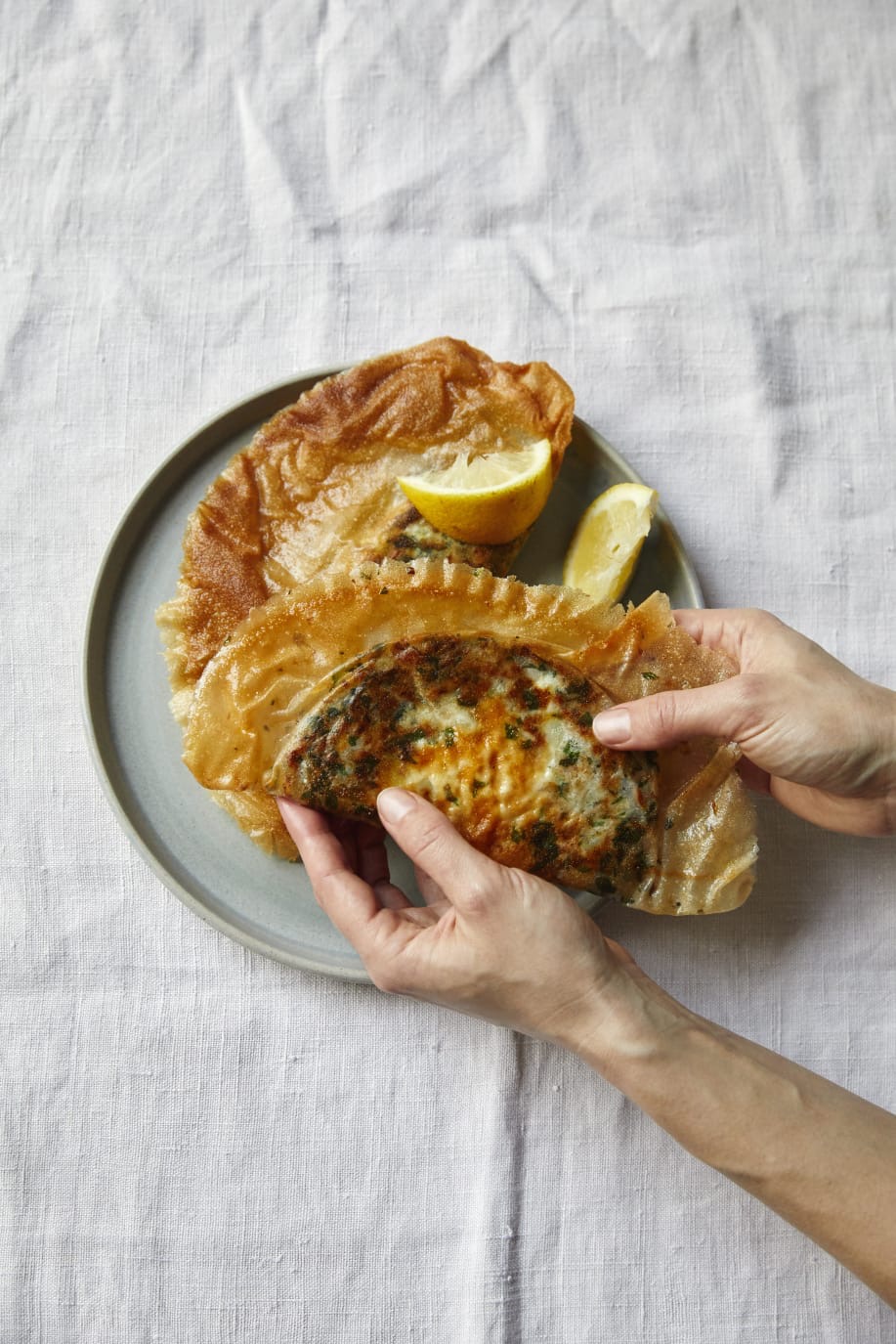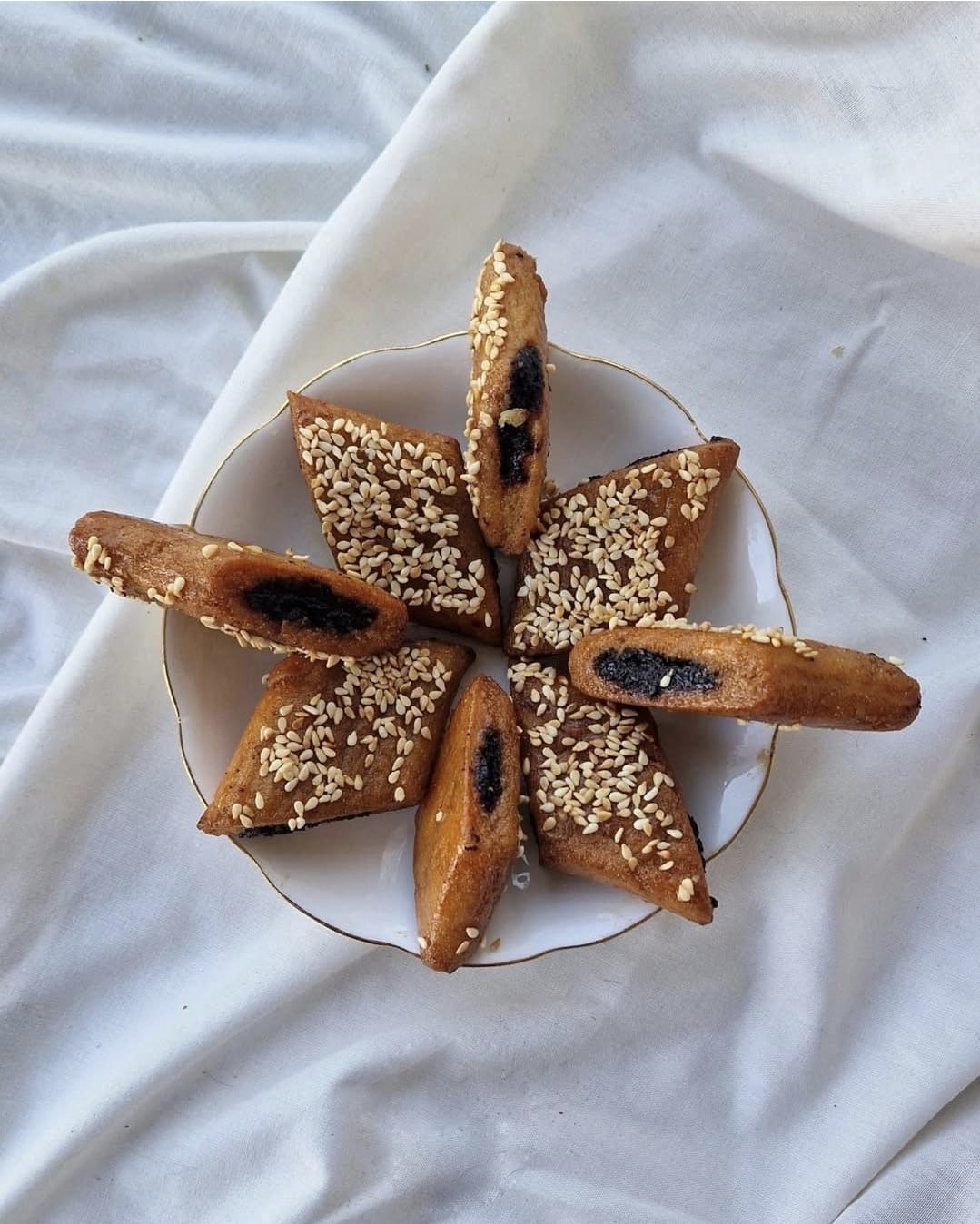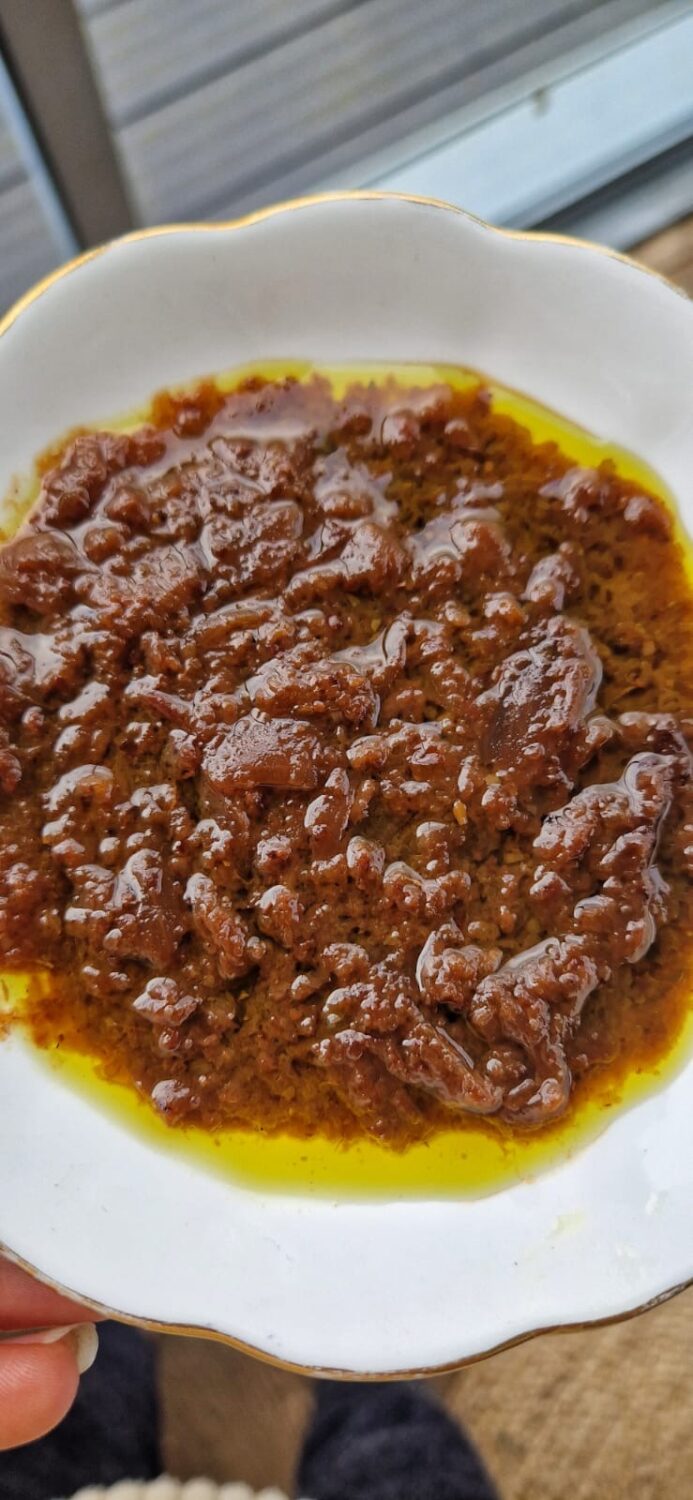Boutheina Ben Salem on Tunisian Cuisine: The Shape of Memory, Instinct, and Reclaiming Narratives
By Rida BilgramiThe first thing that Boutheina Ben Salem remembers cooking was makrouna, Tunisia’s cherished pasta dish. She wanted to surprise her mother, who was returning from a trip. As her mother stepped into the house, she recognised by the aroma that the sauce was missing bay leaf. Ben Salem was sent outside to clear her nose while her mother added the bay leaf. The unmistakable aroma expanded through the room even through a closed door.
“That day, I learned that great cooking is about trusting my instincts, and senses rather than obsessing over measurements and written steps,” says Ben Salem.
This instinctual approach towards recipes as malleable ideas is at the heart of her homage to matriarchal cuisine. Ben Salem’s journey into Tunisian cuisine was guided by the women in her family – her grandmother, mother and aunts – masterful cooks who worked hard to feed their families. Their kitchen was her classroom. “This intergenerational knowledge was mainly transmitted through oral means, through sensory instincts. Your eyes are your scale,” she says.
Born in Lebna, a tiny village in the Cap Bon peninsula in Northeastern Tunisia, Ben Salem grew up on her grandparents’ farm before moving to Côte d’Azur in Southern France aged nine. In those early years in France, she felt tethered to her Tunisian heritage through her mother’s cooking. Alongside language, she sees food as being one of the most resistant and resilient markers of cultural identity, sustained by memory and love for the land. “Growing up in France I was aware of the richness of my cultural heritage. At the same time I was also reckoning with the culinary hierarchy in France. The pressure to assimilate meant that markers of French culture such as language, art, food always take precedence in the diasporic public identity.” Learning how to cook was therefore pivotal in self-discovery. “As a young person straddling two cultures, two homes, I often felt like a puzzle,” she says. “You have the pieces but don’t know how they come together. In the kitchen I felt the most complete, as if the pieces had seamlessly fit into place.”

After years of working as a lawyer, she realised that her passions lay elsewhere. She resigned from her job to travel, including returning back to her grandparents’ farm to observe culinary rituals and travelling around the country learning specialties from different regions. While living in Madrid for a few years, she travelled to the south of the country and spent time in Sevilla, Granada, and Cordoba that deepened her understanding of Andalusian food heritage in Tunisia. She recalls her time in Spain fondly as a place where the seeds of her love for cooking began to blossom. When she moved to London in the early 2010s, she wanted to shine a light on Tunisia and its cuisine and bring it out of the shadows of being an all-inclusive resort hot spot in the British imagination. “Tunisia’s culinary identity was reduced to a hyphen: ‘Middle Eastern–North African,’ as though Tunisia itself were an afterthought rather than a country with a distinctive cuisine.” she writes in her Substack Kalām. She set up BabéldeB supper club to introduce Tunisian cuisine to London beginning with intimate dinners at home, where friends nostalgic for familiar flavours gathered around the table. Soon, word spread, and the dining table heaved with others curious to savour Tunisian cuisine. In recent years Ben Salem has hosted residencies at Carousel and 180 Corner in London, hosted events in Marseilles and Tunis and organised a pop-up in London dedicated solely to brik, a crescent shaped gently fried gossamer-like malsouka pastry ubiquitous across Tunisia. Her brik à l’oeuf is a moreish parcel of zesty potatoes and a perfect trembly egg yolk with the crispy pastry spanning out at the edges like a fishtail.
Ben Salem’s cooking is bright, delicate and quietly expressive. Whether it is her Sfaxian chermoula, a shimmering purée prepared with onions confit in olive oil and strained black raisins; or sohlob, a hot drink made from sorghum topped with pomegranate seeds and chamya (halva), there is a sense that her preparation has transformed the ingredients into the best version of themselves. Her cooking is also an ode to the regional diversity of Tunisian cuisine; the chermoula is a specialty from the port city of Sfax and is traditionally savoured on Eid-al-Fitr with salted fish.
In Ben Salem’s advocacy for Tunisian cuisine which extends to her writing there is an embodiment of authority as a cultural preservationist. Authority that comes from being a dedicated learner, researcher, and raconteur for years. On an uncharacteristically sunny spring afternoon in London, we had a long conversation about her approach and ethos and future projects. This conversation has been edited and condensed for clarity.

Rida Bilgrami: How do you approach developing a menu for a supperclub or residency?
Boutheina Ben Salem: When I develop a menu or a dish, I always situate it within a broader cultural and political context. I refuse to be constrained by concepts like “authenticity”- a word I dislike as much as “upscale” or “modern.” Upscale and modern from whose perspective? Who gets to define authenticity? These are often Western-centric constructs imposed on so-called ‘ethnic’ food. What is paramount for me is translating culture into an edible experience telling the story of people and land through the ingredients I choose, the techniques I use, and even the tablescaping. My cuisine is ingredient-led, with Oula spices and produce at its core. My only imperative is cooking with integrity whether I feel like experimenting later is secondary.
RB: Your centering of the stories of labour and land go beyond stating provenance. Tell me more about the significance of sourcing in your food projects.
BBS: Recognising the labour behind the food is integral to my approach because I grew up so close to the source of where ingredients come from. Foraging and fermenting, which are now buzzwords in modern dining, were a way of life for us. Most of the ingredients I use are grown on my family’s or my neighbours’ farms and come from the Oula. The discussion on terroir is often focused on French and Italian wine, but we hardly use the term to talk about tea in Sri Lanka, for example. When I think of my connection to the land, I think of my ancestors. Land nourishes us, we see it as bountiful, not as something that imparts prestige.
Tunisia has a long-standing tradition of artisanal food production and the ancestral culinary ritual of handcrafting provisions is known as Oula. It’s a ritual shared from one generation of women to another and it really is about honing craftsmanship. The summer months in Tunisia represent an intense period of agricultural work when many major crops are harvested and processed for preservation, from hard wheat to tomatoes to chili peppers. This processing comes in many forms such as grinding dry peppers, rolling hlelem, sun drying tomatoes. Women’s labour is central to the Oula. You may have heard of the idea of nafas that exists across the Arab world. It doesn’t have a direct English equivalent but could translate to breathe or spirit. In the context of food, nafas is an attribute of the person preparing a dish and how they impart deliciousness to whatever they make. The labour is also about the time and energy spent selecting and preparing the ingredients; the warm hospitality and, above all, a profound love of cooking and the desire to feed others. You can follow the same recipe and use the same ingredients as another person, but without the nafas, it won’t taste the same.
RB: In your writing you have been vocal about the impacts of colonisation on Tunisian foodways. Could you share an example of an ingredient and retrace its colonial lineage and extraction?
BBS: The food system that exists today in post-colonial societies including Tunisia is a colonial legacy. The most striking example of this is in olive oil production. Olives have been produced in Tunisia for millennia dating back to the Roman Empire. The pattern of export-oriented monoculture production was imposed by the colonial system. This is a stark example of how an unfair system traps small farmers into feeding a European dominated market that erases them and erodes the deep, historical significance of olive oil in Tunisia. Big European industrial players were buying olive oil from Tunisia at a cheaper price, blending it with other substandard oils, and reselling it under their brand names. In the colonial past we didn’t have access to the global markets but now there are encouraging signs of change. A new generation of producers (most of them women) such as Kaia, Olissey, and Douar are shifting the narrative, reclaiming their place and challenging the Eurocentric vision of the Mediterranean.

RB: What, in your view, would a decolonial approach to food look like?
BBS: I don’t love the term decolonising because of how loosely it is now used. I am more interested in how we reclaim agency and food sovereignty. I think the starting point is to be proud of using indigenous knowledge. For me, personally, it’s always about unfolding the story of what is on the plate and educating others. I recently wrote about baghrir, an airy crêpe, which is a staple across the Maghreb. It is rooted in Berber cuisine, which long predates modern borders. It goes by many names—kourssa, khringo, edarnan, tiƴrifin, ghreyef. Colonialism in Africa, similar to other parts of the world, resulted in the arbitrary drawing of national borders, disregarding pre-existing ethnic, linguistic, and cultural boundaries. Food is the best way to also show the fallacy of national borders not in a way that erases differences because Algeria, Tunisia and Morocco do have distinct food cultures, but we also have shared influences.
RB: You recently completed a month-long residency in Paris – how was your cuisine received there as compared to London?
BBS: I was chuffed by the response I received at Café Singuliers. It’s in the 11th arrondissement in Paris, which is a part of the city that is quite eclectic and frequented by Parisians who are open to global cuisines and chefs pushing boundaries. I had several guests with North African Jewish heritage who shared how my cooking was reminiscent of food they had grown up eating, which was very heartening. In the UK Tunisian cuisine has such little visibility so I see my efforts here as putting Tunisia on the map whereas in Paris it was more about playing a part in helping others unlearn their preconceived notions about the cuisine. I also think it’s not just about perceptions that the French have of Maghrebi cuisines, it’s also how those from the region present and market their food. Branding food under broader, vaguer identities makes it easier to sell but dilutes the richness of our culinary heritage.
RB: This reminds me of the conversation that Franco-Palestinian chef Fadi Kattan and writer Karim Kattan had about how Arab chefs self-orientalise under labels such as Middle Eastern, Levantine or Mediterranean cuisine. As Kattan stated: “If you’re having a meal in Northern Algeria it has nothing to do with the meal that you could have in South Turkey.”
BBS: Yes, precisely. The term Middle East is so amorphous when it comes to food cultures to the point of being completely meaningless.
RB: Tell me more about your project exploring Islamic architecture through a culinary lens?
BBS: I am very interested in the cultural interplay between culinary arts and architectural design. The origin of this interest traces far back. I was incredibly fascinated with the hexagonal honeycomb structure as a child to the point of being stung badly when I stepped into a beehive as a child. The interior domes of many of the striking mosques and palaces across the Arab world and Persia and even Alhambra in Granada have a honeycomb design (muqarnas in Arabic). I noticed how some dishes mirror the shapes and structures of Islamic architectural elements. For instance, makroudh is date-filled pastry shaped into a rhombus -a geometric form often seen in Islamic tilework, mashrabiya screens, and zellige mosaics. Some “kaleb”-carved wooden tools used to imprint patterns on makroudh-resemble muqarnas in its faceted, symmetrical design. I hope to present my research through a physical exhibition in the near future. In a sense I am also thinking of food styling but in a way that is more culturally informed than simply aesthetically trendy.
Rida Bilgrami is a writer based in London. Her work spans poetry, essays and reported features with a focus on travel, books, visual culture and cities. Read more of Rida’s work on Something Curated here.
Header photograph by Hana Zebzabi.